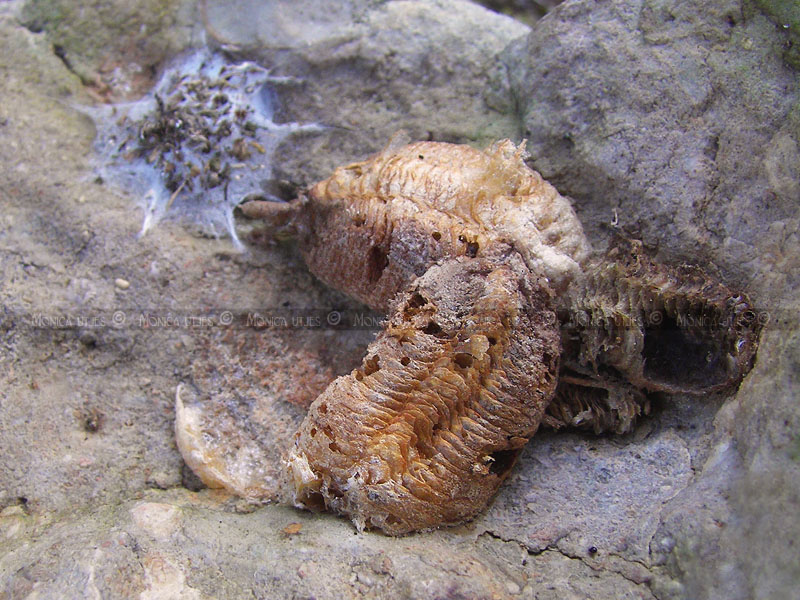Español: En la época de apareamiento la Mantis hembra emite feromonas, atrayendo al macho y en esta época cuando sucede el único momento en la que los machos y hembras se reúnen. En esta época las hembras se vuelven muy agresivas y acaban con comerse a su compañero durante o después del apareamiento empezando por la cabeza, aunque este comportamiento está bastante mitificado, ya que, si bien se da con frecuencia en cautiverio, es raro en libertad. La cópula dura 2 horas.
La puesta de los huevos se hace en otoño y en primavera los huevos eclosionarán. Pone sus huevos en montoncitos espumosos (ootecas) que ata a las ramitas o piedras. La espuma se endurece pronto, lo que protege los huevos hasta que se abren. Cada saco puede albergar entre 200 y 300 huevos.
The mating season in temperate countries typically begins in autumn. To mate following courtship, the male usually leaps onto the female’s back, and clasps her thorax and wing bases with his forelegs. He then arches his abdomen to deposit and store sperm in a special chamber at the tip of the female’s abdomen.
Depending on the species, the female then lays between 10 to 400 eggs. These are deposited in a frothy mass that is produced by glands in the abdomen. This froth then hardens, creating a protective capsule with a further protective coat, and the egg mass is called an ootheca. Depending on the species these can be attached to a flat surface, wrapped around a plant or even deposited in the ground. In spite of the versatility and durability of the eggs, they are often preyed on, especially by several species of wasps. Variability in the species also determines whether or not the mother guards the egg pod or leaves it.
The praying mantis goes through three stages of metamorphosis: egg, nymph, and adult. Scientists also refer to this as an incomplete metamorphosis because the nymph and adult insect look essentially alike, except that the nymph is smaller and has no wings. A mantis nymph increases in size by replacing its outer body covering with a sturdy, flexible exoskeleton and molting when needed. This can happen up to five to ten times, depending on the species. After the final molt it should have full grown wings. Some species are wingless or brachypterous, particularly in the female sex.

No hay comentarios:
Publicar un comentario